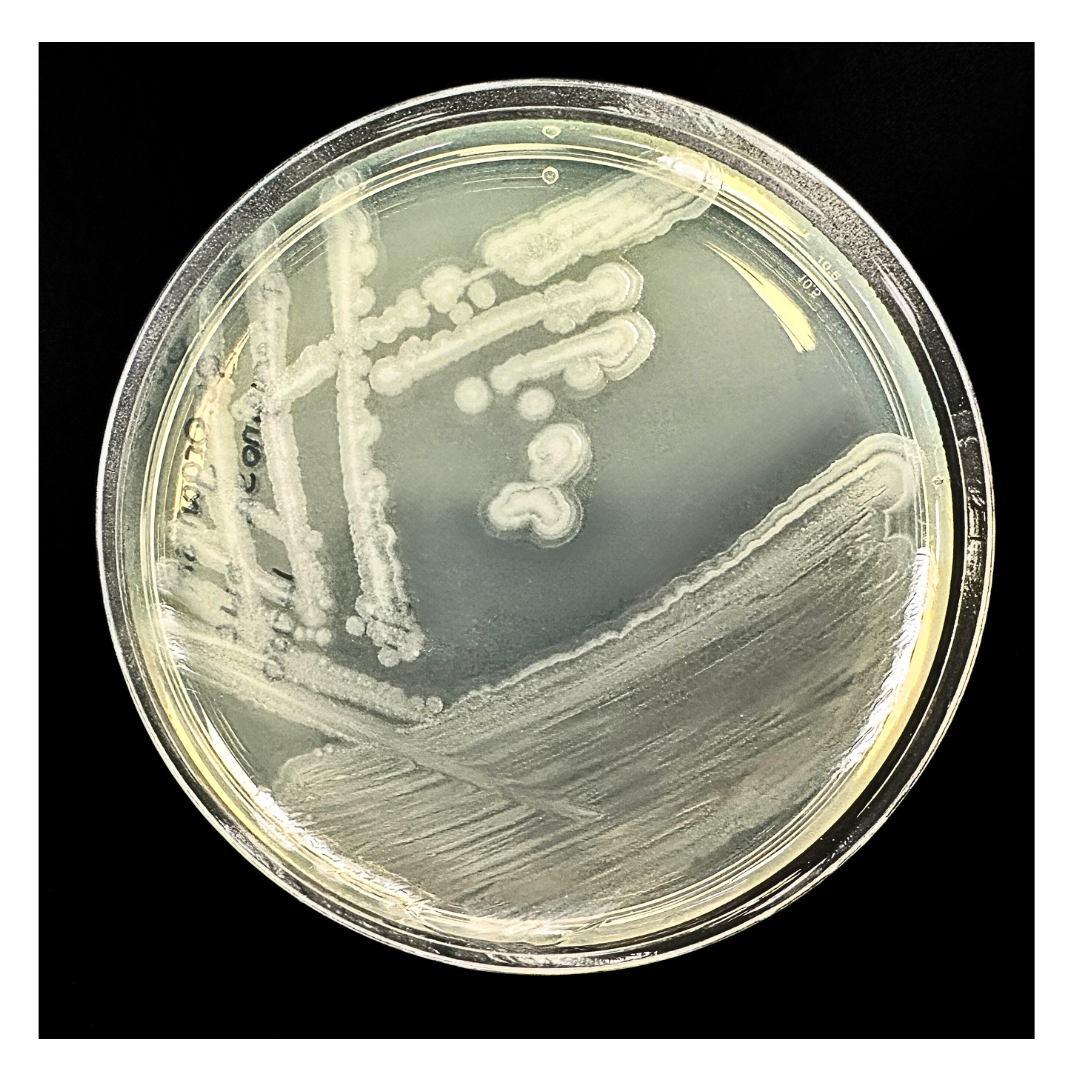
Pseudomonas aeruginosa is a Gram-negative, aerobic rod-shaped bacterium with a grape like odour and can be set apart from other species in the genus as it has the ability to optimally grow at 42°C. This bacterium is classified as an opportunistic and nosocomial pathogen as it can cause infection in the urinary tract, respiratory system, dermis, soft tissue, bacteraemia, bone and joint and GI tract. Importantly, patients who are immunodeficient are most at risk from this organism as it causes significant problems in patients
 with cystic fibrosis (CF), acquired immune deficiency syndrome (AIDS), tuberculosis, severe burns and individuals hospitalized with cancer.
with cystic fibrosis (CF), acquired immune deficiency syndrome (AIDS), tuberculosis, severe burns and individuals hospitalized with cancer.
P. aeruginosa is the most frequent cause of chronic pulmonary infection in CF patients after infancy,
and once the infection is established, it is incurable
in the majority of cases [1]. Around a third of people with CF have chronic infection with P aeruginosa by their mid-20s and 2/3 of CF adults have some kind of Pseudomonas spp. infection, although prior to chronic infection P. aeruginosa is isolated intermittently from respiratory tract specimens [2]. P. aeruginosa grown in the DWS laboratory
Hewer et al carried out a review into 11 recent randomised controlled trials investigating the effectiveness of different antibiotic treatments on P. aeruginosa respiratory infection within CF and the onset of chronic infection [1]. There are currently multiple regimes for treatment and eradication using a combination of oral, IV and nebulised drugs and evidence points to the best course for good prognosis being early detection, to prevent or delay the infection of the respiratory tract. The review concluded that in the comparison of inhaled tobramycin versus placebo, results suggested a potential slight improvement in eradication with tobramycin, particularly at higher doses [1].
Another comparison between 28-day and 56-day inhaled tobramycin treatments showed no significant differences in outcomes, including time to next isolation and adverse effects [1]. The analysis of cycled inhaled tobramycin versus culture-based treatment suggested that cycled therapy might lead to fewer P. aeruginosa isolation incidences, but probably makes no significant differences in lung function [1]. The addition of ciprofloxacin to inhaled tobramycin therapy did not show a significant impact on eradication of infection [1]. Inhaled colistin plus oral ciprofloxacin, versus inhaled tobramycin did not show differences in eradication or spirometric lung function. The addition of oral azithromycin to inhaled tobramycin had mixed results, with no clear impact on eradication but potential improvements in weight and exacerbation frequency [1]. Additionally, a comparison of oral ciprofloxacin and inhaled colistin versus no treatment showed no significant differences in chronic infection after 12 months. Lastly, the trial comparing different durations of inhaled aztreonam lysine (AZLI) did not provide clear evidence on the optimal duration for eradicating P. aeruginosa [1]. Overall, the evidence presented by Hewer et al highlights the complexity of P. aeruginosa infections within CF patients and a need for ongoing research into effective antibiotic strategies for treatments.
The emergence of carbapenem resistant P. aeruginosa (CRPA) via enzymatic mechanisms has led to WHO categorising the organism as one of three Critical Priority pathogens [3]. Reyes et al. (2023) conducted an observational study across 44 hospitals globally, where they collected CRPA isolates from bloodstream, respiratory, urinary, or wound infections in hospitalised patients. Collected strains were subjected to resistant at local laboratories before being sent to a central laboratory where appropriate strains were then chosen based on an MIC of ≥8 μg/mL to Meropenem [3], using standard broth microdilution methodology and full genome sequencing was performed. They found that the prevalence of CRPA varied globally and diversified further within regions of certain countries [3]. Furthermore, it was reported that the most common carbapenemases were KPC-2 and VIM-2 and that patients with carbapenemase-producing CRPA infections had higher 30-day mortality than those with non-carbapenemase-producing CRPA infections [3].
Further research into the resistance mechanisms in P. aeruginosa is essential, including research of carbapenemases, because many such enzymes confer resistance not only to carbapenems, but also to other β-lactam drugs, including β-lactam–β-lactamase inhibitors, which could have implications for antibiotic therapies in the future.
Written by DWS Microbiologist Charlotte Austin
For further information regarding our Contract Microbiology Lab please visit our website or contact us using the form below:
- Langton Hewer SC, Smith S, Rowbotham NJ, Yule A, Smyth AR. (2023) Antibiotic strategies for eradicating Pseudomonas aeruginosa in people with cystic fibrosis. Cochrane Database of Systematic Reviews, Issue 6
- Cystic fibrosis trust UK. Strategic Research Centre: Personalised approach to Pseudomonas aeruginosa (PAPA) https://www.cysticfibrosis.org.uk/research/cf-research-topics/understanding-and-treating-lung-infections/src-14-davies accessed 28th November 2023
- Jinnethe Reyes, Lauren Komarow, Liang Chen, Lizhao Ge, Blake M Hanson, Eric Cober, Erica Herc, Thamer Alenazi, Keith S Kaye, Julia Garcia-Diaz, Lanjuan Li, Souha S Kanj, Zhengyin Liu, Jose M Oñate, Robert A Salata, Kalisvar Marimuthu, Hainv Gao, Zhiyong Zong, Sandra L Valderrama-Beltrán, Yunsong Yu, Paul Tambyah, Gregory Weston, Soraya Salcedo, Lillian M Abbo, Qing Xie, Karen Ordoñez, Minggui Wang, Martin E Stryjewski, Jose M Munita, David L Paterson, Scott Evans, Carol Hill, Keri Baum, Robert A Bonomo, Barry N Kreiswirth, Maria Virginia Villegas, Robin Patel, Cesar A Arias, Henry F Chambers, Vance G Fowler Jr, Yohei Doi, David van Duin, Michael J Satlin (2023) Global epidemiology and clinical outcomes of carbapenemresistant Pseudomonas aeruginosa and associated carbapenemases (POP): a prospective cohort study. The Lancet Microbe, vol 4


 au
au

 English
English